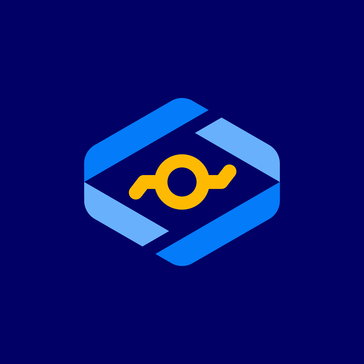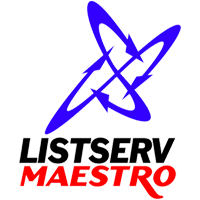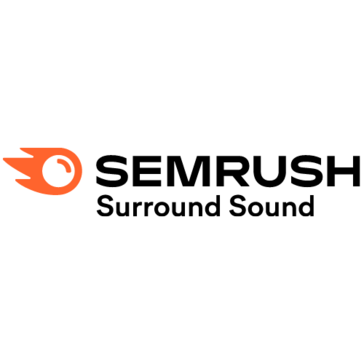4.80
Privacyboard Review
Explore our Privacyboard review. We assess its features, security, pricing, updates, support, and overall value for money. Find out if it’s the right fit!

Introduction to Privacyboard
Welcome to our Privacyboard review. Navigating complex privacy regulations is a major challenge for businesses today. Privacyboard presents itself as a solution to simplify compliance management. For many users, getting started with Privacyboard is refreshingly straightforward, offering quick access to essential tools. This overview covers the Privacyboard basics, providing a foundation for understanding its potential role in your privacy program and setting the stage for our detailed analysis. Understanding Privacyboard means grasping how it centralizes crucial compliance tasks. The platform aims to streamline workflows for data mapping, assessments, and consent management. Key benefits of Privacyboard include enhanced visibility over data practices and simplified reporting. We'll explore how these features translate into practical advantages for businesses seeking efficient and effective privacy operations, helping you evaluate if it meets your specific requirements.
Comprehensive overview and target audience
Privacyboard positions itself as a dedicated solution for organizations navigating the complexities of data privacy management. It aims to simplify compliance with regulations like GDPR, CCPA, and others through a centralized platform. The software offers a suite of tools designed to automate and streamline tasks such as data mapping, consent management, DSAR fulfillment, and risk assessments. Its core philosophy revolves around making privacy compliance accessible and manageable, regardless of an organization’s size or technical expertise.
The primary target audience includes data protection officers, legal teams, compliance managers, and IT professionals within small to medium sized businesses, although larger enterprises also find its features beneficial. Essentially, any organization handling personal data that needs a structured approach to meet regulatory requirements is a potential user. Privacyboard seeks to alleviate the burden of manual tracking and reporting, providing clarity and control over data privacy obligations.
Key functionalities center around mapping data flows, maintaining records of processing activities, and managing user consent preferences effectively. Strong emphasis is placed on robust Privacyboard security features; ensuring data handled within the platform itself is protected through encryption and access controls. This focus on security is crucial for building trust with both users and regulators. The platform regularly receives Privacyboard updates and new features, reflecting the evolving landscape of privacy laws and user needs. These updates often include enhanced reporting capabilities, integrations with other business systems, and refined user interfaces based on feedback.
Evaluating Privacyboard value for money requires considering its comprehensive feature set against its cost. While a detailed Privacyboard pricing comparison with direct competitors reveals various tiers, the platform generally aims for competitive positioning, offering significant operational efficiencies and risk reduction that justify the investment for many businesses. Furthermore, understanding the available Privacyboard support and training resources is vital. The company provides documentation, tutorials, and customer support channels to help users maximize their use of the platform and stay informed about best practices and new functionalities, ensuring teams can effectively leverage the tool for sustained compliance.
User experience and functional capabilities
Delving into the user experience and functional capabilities of Privacyboard reveals a platform designed with accessibility in mind. Initial interactions often align with the introduction’s point about a straightforward start. Many core functions feel intuitive, making the basic process of How to use Privacyboard relatively easy to grasp for compliance newcomers. The dashboard provides a central hub, offering quick views of pending tasks, compliance status, and key metrics. Navigation generally follows logical paths, allowing users to access modules for data mapping, consent management, or assessment creation without significant confusion. This initial ease of use is a considerable strength, reducing the barrier to entry for teams needing immediate compliance support.
However, gaining deeper Privacyboard user experience insights shows that while basics are simple, mastering advanced configurations and workflows can present a steeper learning curve. This is particularly true when tailoring the platform to highly specific organizational structures or complex data processing activities. While the platform aims for simplicity, the inherent complexity of privacy regulations means some features require careful setup and understanding. This highlights the value of resources like a comprehensive Privacyboard implementation guide and available customer support, ensuring users can fully leverage the platform’s power beyond initial setup. Thorough onboarding and training are recommended Best practices for maximizing the tool’s effectiveness from the outset.
Functionally, Privacyboard covers essential compliance ground. Key capabilities include: mapping data flows visually; maintaining Records of Processing Activities RoPA; managing subject requests DSARs efficiently; conducting Data Protection Impact Assessments DPIAs and other risk evaluations; and tracking user consent. These tools work together to centralize compliance efforts, replacing disparate spreadsheets and manual processes. Integrating Privacyboard with other tools, such as CRM systems, marketing automation platforms, or HR software, is crucial for seamless data flow and consistency. While integrations are available, setting them up can sometimes surface Common problems with Privacyboard, often requiring technical assistance or careful planning to ensure data syncs correctly. Ensuring compatibility and smooth data exchange during integration is vital for realizing the platform’s full potential.
The platform’s evolution is evident through regular Privacyboard updates and new features. These enhancements often address user feedback, refine existing functionalities, or introduce capabilities to meet emerging regulatory demands. Staying informed about these updates helps users adapt their processes and benefit from the latest improvements. Despite its strengths, users sometimes report Common problems with Privacyboard centering on the customization limitations within certain modules or occasional glitches following major updates. However, the commitment to ongoing development suggests a proactive approach to resolving issues and enhancing the overall utility and user satisfaction, reinforcing its role as a dynamic compliance management solution.
Who should be using Privacyboard
Privacyboard is fundamentally designed for any organization that collects; processes; or stores personal data and needs a structured; efficient way to manage its privacy obligations. While particularly beneficial for small to medium sized businesses seeking an accessible entry point into formal compliance; its capabilities also serve larger enterprises aiming to streamline complex privacy programs. Key users typically include specific roles within an organization:
- Data Protection Officers DPOs who require a central dashboard for oversight and reporting.
- Legal and Compliance Teams tasked with interpreting regulations like GDPR or CCPA and ensuring adherence through documented processes.
- IT Professionals responsible for implementing technical controls and managing data flows securely.
- Marketing Departments needing compliant consent management mechanisms.
A common Privacyboard use case scenario involves a company transitioning from manual compliance methods; such as spreadsheets and checklists; to an automated system. Imagine an online retailer experiencing growth; suddenly facing increased scrutiny over customer data handling. They need to efficiently manage consent preferences across marketing channels; respond promptly to customer data requests; and maintain accurate records of their data processing activities. Privacyboard offers the tools to automate these workflows; reducing manual effort and minimizing the risk of non compliance.
Organizations struggling with the complexity of data mapping; conducting regular risk assessments like DPIAs; or managing vendor privacy compliance will find significant value. Furthermore; businesses aiming to build trust by demonstrating transparent and robust data protection practices should consider Privacyboard. Effectively leveraging the platform often involves adopting Best practices for Privacyboard; such as ensuring thorough team training and configuring the system to accurately reflect the organizations specific data landscape. Ultimately; Privacyboard is for entities serious about embedding privacy management into their operations; seeking clarity; control; and efficiency in navigating the regulatory environment.
Unique Features offered by Privacyboard
Privacyboard recognizes that a one size fits all approach rarely suffices in the complex world of privacy compliance. Therefore, it offers several customization options designed to align the platform with specific organizational needs and processes. Users can often tailor workflows for tasks like DSAR fulfillment or assessment approvals, ensuring the software reflects internal operational realities rather than forcing adherence to a rigid structure. This adaptability is crucial for Customizing Privacyboard for business growth, allowing the platform to scale alongside the organization’s evolving data landscape and compliance requirements.
Further customization extends to areas like assessment templates and reporting. Businesses can modify standard templates for DPIAs or vendor assessments to include specific questions relevant to their industry or risk profile. Reporting dashboards can sometimes be adjusted to highlight key performance indicators most pertinent to the compliance team or executive leadership. For many organizations, especially Privacyboard for small businesses, the ability to brand elements like consent banners or privacy portals with company logos and colors enhances user trust and provides a consistent external appearance. These seemingly small touches contribute significantly to a professional and integrated compliance posture.
Beyond standard customization, Privacyboard presents unique features aimed at simplifying complex tasks. Notable capabilities might include:
- Advanced data mapping visualization tools that offer granular insights into data flows across systems.
- Automated risk scoring mechanisms within assessments, providing objective measures to prioritize mitigation efforts.
- Sophisticated consent lifecycle management, handling nuanced requirements like consent withdrawal or preference updates seamlessly.
Integrating Privacyboard with other tools is another key aspect enhancing its unique value proposition. While core integrations exist, the availability of APIs or specific connectors allows businesses to weave Privacyboard into their broader technology ecosystem, connecting it with CRM, HR, or marketing platforms for truly centralized data governance. This integration capability transforms Privacyboard from a standalone compliance tool into a more embedded component of the overall business infrastructure, maximizing its utility and data accuracy.
Pain points that Privacyboard will help you solve
Navigating the modern data privacy landscape presents significant hurdles for organizations of all types. Many businesses grapple with confusing regulations; inefficient manual processes; and the constant pressure to demonstrate compliance. Privacyboard is specifically designed to alleviate these common frustrations by providing a structured; automated approach to privacy management. If your team feels overwhelmed by compliance tasks or lacks clear visibility into your data practices; Privacyboard aims to offer tangible solutions.
Here are some specific challenges Privacyboard targets:
- Feeling overwhelmed by the sheer complexity and constant evolution of privacy laws like GDPR; CCPA; and others; making it hard to stay current and confident in your compliance status.
- Relying on spreadsheets; emails; and manual tracking for critical tasks such as managing Records of Processing Activities RoPA; handling Data Subject Access Requests DSARs; and tracking consent; which is time consuming; inefficient; and prone to errors.
- Lacking clear visibility into where personal data resides within your organization; how it flows between systems; and what processing activities are actually taking place.
- Struggling to efficiently collect; manage; and document user consent preferences across various touchpoints; ensuring compliance with requirements like opt outs and withdrawals.
- Finding the process of conducting; documenting; and regularly reviewing Data Protection Impact Assessments DPIAs and other risk evaluations to be burdensome and difficult to manage systematically.
- Facing difficulties in responding to DSARs accurately and within the legally mandated timeframes; risking fines and reputational damage.
- Spending excessive time and resources compiling accurate; audit ready compliance reports for regulators or internal stakeholders.
- Struggling to maintain consistent compliance across various company systems; a challenge directly addressed by effectively Integrating Privacyboard with other tools like your CRM or marketing platforms.
- Searching for a robust yet manageable solution that fits your organizations scale; addressed by the flexibility of Privacyboard for different businesses sizes; from small operations to larger enterprises.
- Finding that your current privacy methods dont scale effectively; hindering your ability to adapt compliance efforts easily which highlights the importance of Customizing Privacyboard for business growth and evolving data needs.
Privacyboard seeks to replace these scattered; manual; and often stressful processes with a centralized; streamlined platform. It provides the tools and automation needed to build a more resilient; efficient; and verifiable privacy program; ultimately reducing risk and freeing up valuable resources.
Scalability for business growth
As your organization expands, its data footprint and associated compliance responsibilities inevitably grow alongside it. Managing privacy effectively at scale is not just a legal necessity; it is a fundamental requirement for sustainable business growth. Privacyboard is built with this trajectory in mind, offering a platform designed to accommodate increasing data volumes, user bases, and regulatory complexities without compromising efficiency or control. Its underlying architecture anticipates the needs of growing businesses, ensuring that the tools you rely on today remain robust and responsive tomorrow.
This inherent scalability manifests in several key ways. The platform is engineered to handle a rising tide of data subject requests, consent records, and processing activities efficiently. Whether you are onboarding ten new customers or ten thousand, Privacyboard maintains performance. Furthermore, its ability to manage compliance requirements across different departments, business units, or even international jurisdictions provides the flexibility needed as your operational scope widens. This prevents the need to constantly switch solutions as your company evolves, offering a consistent compliance framework.
Crucially, effective scaling involves more than just capacity; it requires adaptability. This is where Customizing Privacyboard for business growth becomes essential. The platform allows you to refine workflows, adjust assessment parameters, and integrate with new systems as your operational landscape changes. You are not locked into rigid processes that quickly become outdated. Instead, Customizing Privacyboard for business scalability means tailoring the platform to continuously align with your specific, evolving requirements. This ensures that Privacyboard grows with you, adapting its configuration and focus to match your organization’s development stage and strategic priorities.
Ultimately, Privacyboard’s scalability provides peace of mind. It assures businesses that their investment in a privacy management solution will continue to deliver value as they expand. By handling increased loads and adapting through customization, the platform supports rather than hinders growth, allowing teams to focus on strategic objectives instead of being bogged down by compliance limitations. It transforms privacy management from a potential bottleneck into a well managed aspect of a thriving, scalable business operation.
Final Verdict about Privacyboard
After reviewing Privacyboard’s capabilities, user experience, and intended purpose, it is clear the platform offers a compelling solution for organizations striving to manage data privacy compliance effectively. Its primary strength lies in centralizing and streamlining core privacy tasks. Businesses struggling with fragmented processes, manual tracking of consent or data maps, and the sheer complexity of regulations like GDPR and CCPA will find significant relief using this tool. The initial setup and basic functions are notably user friendly, lowering the barrier to entry for teams needing immediate compliance support.
Privacyboard successfully addresses many common pain points:
: It replaces cumbersome spreadsheets and manual workflows with automated processes for DSAR management, risk assessments, and maintaining Records of Processing Activities.
: It enhances visibility into data practices, helping organizations understand where personal data resides and how it flows.
: It provides robust tools for managing user consent throughout its lifecycle.
While the core functionality is accessible, users should anticipate a learning curve when delving into advanced customization or complex integrations. Fully leveraging the platform often requires dedicated time for setup and potentially utilizing the available support resources. However, the options for tailoring workflows and reports, combined with its inherent scalability, make Privacyboard a viable long term solution. It is designed to grow alongside a business, accommodating increased data volumes and evolving regulatory demands, which is crucial for sustainable compliance.
The final verdict on Privacyboard is largely positive. It stands out as a strong contender, particularly for small to medium sized businesses seeking a comprehensive yet manageable privacy management platform. Larger enterprises can also benefit from its features, especially if seeking to streamline specific compliance functions. Privacyboard effectively bridges the gap between regulatory requirements and operational reality, offering the structure, automation, and visibility needed to build a resilient and efficient privacy program. It represents a solid investment for organizations serious about data protection.
Advantage
Disadvantage
Centralizes all your privacy management tasks
Simplifies complex data privacy compliance processes
Automates handling of data subject requests efficiently
Provides clear, actionable privacy compliance reporting
Streamlines user consent and preference management easily
Disadvantage
Steep initial learning curve for complex setups
Pricing might be high for smaller sites
Customization limitations on basic plans
Can slightly impact website load times
Integration with niche tools may be limited
Rating
Free
€0 per Month Paid Monthly
- 1 user
- 1 workspace
- Cookie consent management
- Unlimited domains
- Privacy policy generator
- Cookie policy generator
- Terms & conditions generator
Starter
€19 per Month Paid Monthly
- all features in Free+
- 5 users
- 3 workspaces
- Remove Privacyboard branding
- Access to all integrations
Pro
€39 per Month Paid Monthly
- all features in Starter+
- 10 users
- Unlimited workspaces
- Multiple languages support
- Geolocation rules
Starter
€180 per Year Paid Yearly
- all features in Free+
- 5 users
- 3 workspaces
- Remove Privacyboard branding
- Access to all integrations
Pro
€348 per Year Paid Yearly
- all features in Starter+
- 10 users
- Unlimited workspaces
- Multiple languages support
- Geolocation rules
Web Based
Windows
Mac OS
Linux
Android
iOS
Phone Support
Email/Help Desk
AI Chat Bot
Live Support
24/7 Support
Forum & Community
Knowledge Base
Live Online
Documentation
Videos
In Person
Webinars
Implementation
Web Based
Windows
Mac OS
Linux
Android
iOS
Support
Phone Support
Email/Help Desk
AI Chat Bot
Live Support
24/7 Support
Forum & Community
Knowledge Base
Training
Live Online
Documentation
Videos
In Person
Webinars
Group text
Alternative Products
Web Based
Live Online, Documentation, Videos, Webinars
Email/Help Desk, Knowledge Base
Frequently Asked Questions
What exactly is Privacyboard?
Privacyboard is a dedicated software platform designed to help businesses manage data privacy compliance, streamline processes related to regulations like GDPR, CCPA, and others, and centralize their privacy program management.
How can Privacyboard help me?
It helps you simplify complex privacy tasks, automate responses to data subject requests (DSRs), manage user consent effectively (like cookie banners and preference centers), map your data processing activities, conduct privacy assessments, reduce the risk of costly non-compliance fines, and build trust with your customers by showcasing responsible data stewardship.
What are the key features of Privacyboard?
Key features typically include consent and preference management, automated DSR workflows, data discovery and mapping tools, privacy impact assessment (PIA/DPIA) templates and management, vendor risk assessment capabilities, compliance reporting and dashboards, and potentially integration with other business systems.
Who is Privacyboard designed for?
Privacyboard is designed for organizations of all sizes that handle personal data and fall under the scope of privacy regulations. This includes Data Protection Officers (DPOs), legal and compliance teams, IT security professionals, and marketing departments needing to manage user consent and data requests.
Is Privacyboard easy to set up and use?
Generally, platforms like Privacyboard aim for user-friendliness with guided setup processes and intuitive interfaces, especially compared to managing compliance manually. While understanding privacy concepts is necessary, the tool itself is often designed to be relatively straightforward to configure and operate for its core functions, though integrating it fully into complex data ecosystems requires effort.
How does Privacyboard compare to alternatives?
Compared to manual methods (spreadsheets, email), Privacyboard offers significant advantages in automation, efficiency, audit trails, and consistency. Against other privacy management software (like OneTrust, TrustArc, etc.), Privacyboard might differentiate itself based on its specific feature set balance, pricing structure, ease of use for particular segments (e.g., SMBs vs. enterprise), integration options, or customer support model.
What does Privacyboard cost?
Privacyboard’s cost usually follows a subscription model, likely tiered based on factors such as website traffic, the volume of data subject requests, the specific modules or features required (e.g., data mapping, assessments), number of users, or number of domains managed. Exact pricing typically requires visiting their website or contacting sales for a quote, and often includes different plans for varying business needs, potentially with a free trial or demo available.
Is Privacyboard worth it?
For businesses needing to systematically manage privacy compliance, reduce manual effort, mitigate significant financial and reputational risks associated with non-compliance, and build customer trust, Privacyboard is generally considered a worthwhile investment. The cost savings from avoided fines and increased operational efficiency often outweigh the subscription fees, particularly as data volumes and regulatory scrutiny increase.






